What size dehumidifier do I need? Expert tips to ensure you’re picking the right size for your home
With so many dehumidifiers on the market, we’ve got the low-down on what size you actually need for your space
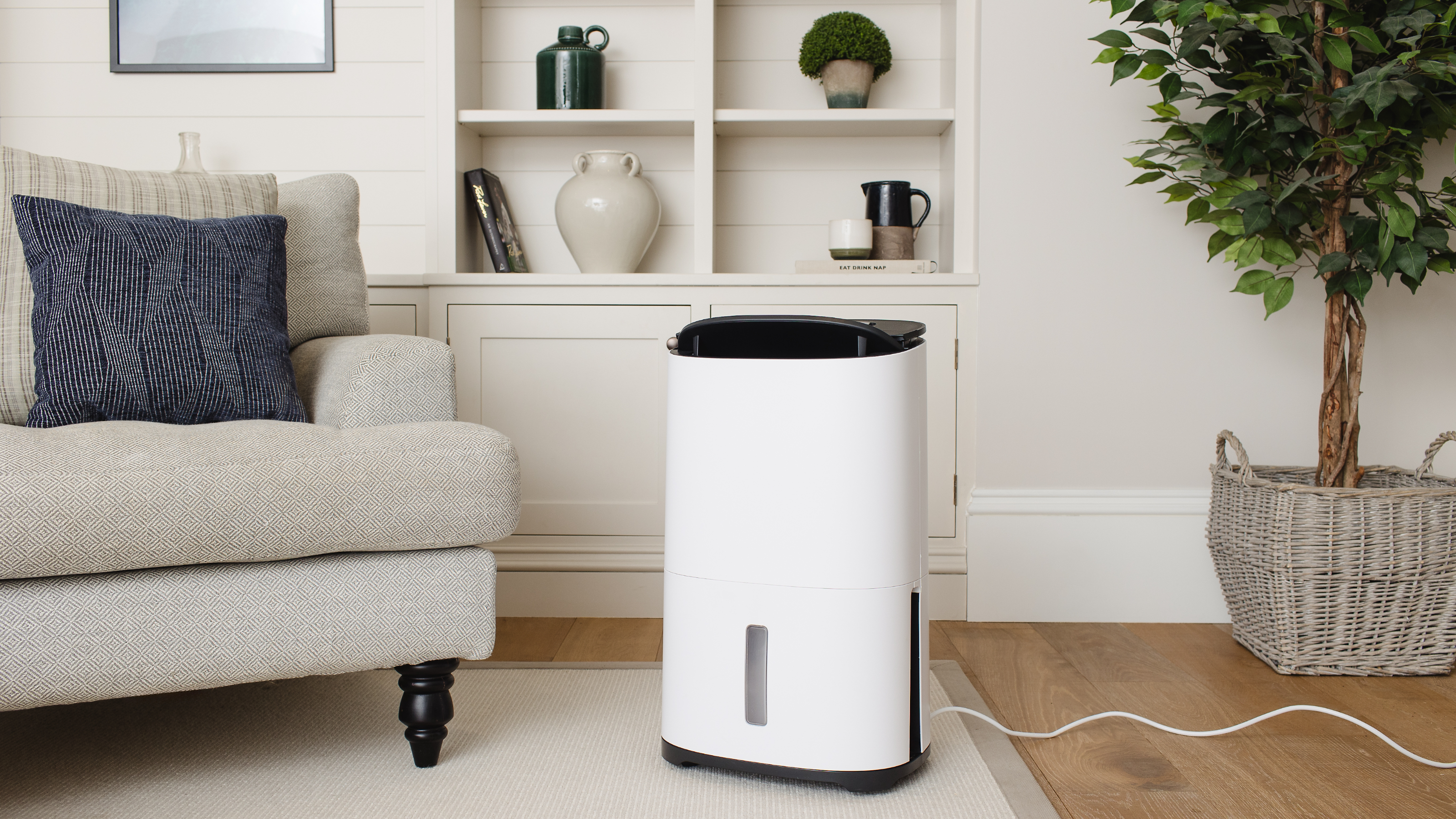

Knowing what size dehumidifier you need is essential when purchasing this appliance. After all, buying a dehumidifier is an investment that you want to get right the first time.
The Ideal Home team has tested some of the best dehumidifiers on the market, and we’ve all agreed that they’re a must-have appliance in the home. From getting rid of damp to maintaining the correct humidity level of a room, they can ensure a healthy living space for your family while also preventing potential damage to your property. But as dehumidifiers come in many different shapes, forms, and sizes, buying a dehumidifier can be daunting.
As Joshua Warren, a dehumidifier expert at AO.com, explains, ‘Choosing the correct size dehumidifier is essential if you want to manage humidity levels in your home effectively.’ And choosing the wrong size is generally considered one of the worst dehumidifier buying mistakes you can make. So, this is how to choose the right size dehumidifier for your home.
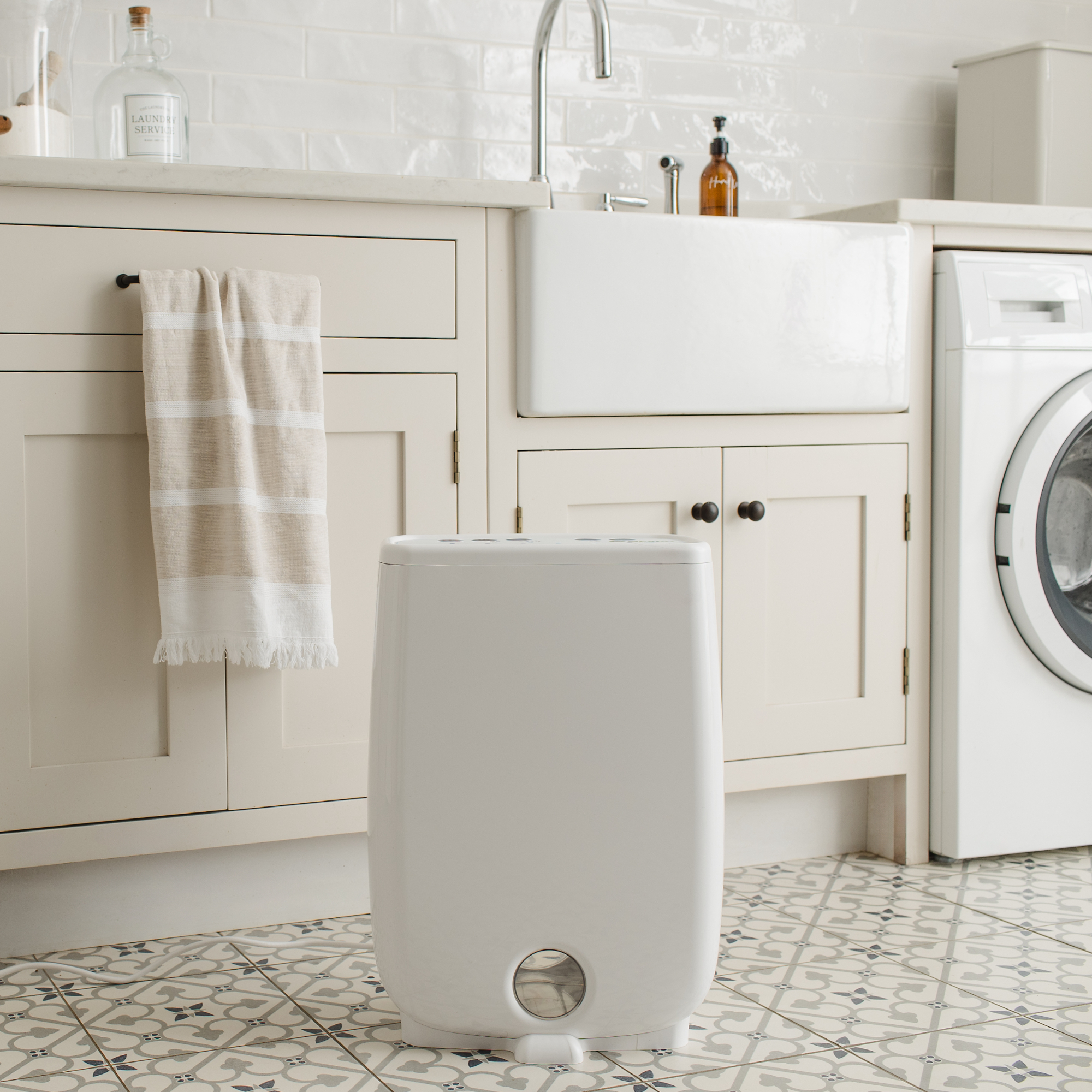
How big of a dehumidifier do I need?
The size dehumidifier you need all depends on your problem areas and how big those areas are.
Small rooms
It’s not uncommon for smaller rooms, such as the kitchen or the bathroom, to suffer from humidity the most. These rooms normally pump excess moisture into the air when you shower or when you cook.
If you want to stop mould from developing a dehumidifier with an extraction rate of around 10 to 14 litres per day would suit these kinds of rooms, as long as your room is under 400-square-foot.
But what does this 14-litres mean? Chris Michael from Meaco revealed, 'When choosing the right sized dehumidifier for your home, it is the amount of water the dehumidifier can extract which is the important figure, not the capacity of the water tank.'
So, opting for a dehumidifier that has a lower extraction rate in a small room should suit you - especially if you only want to use it in that room.
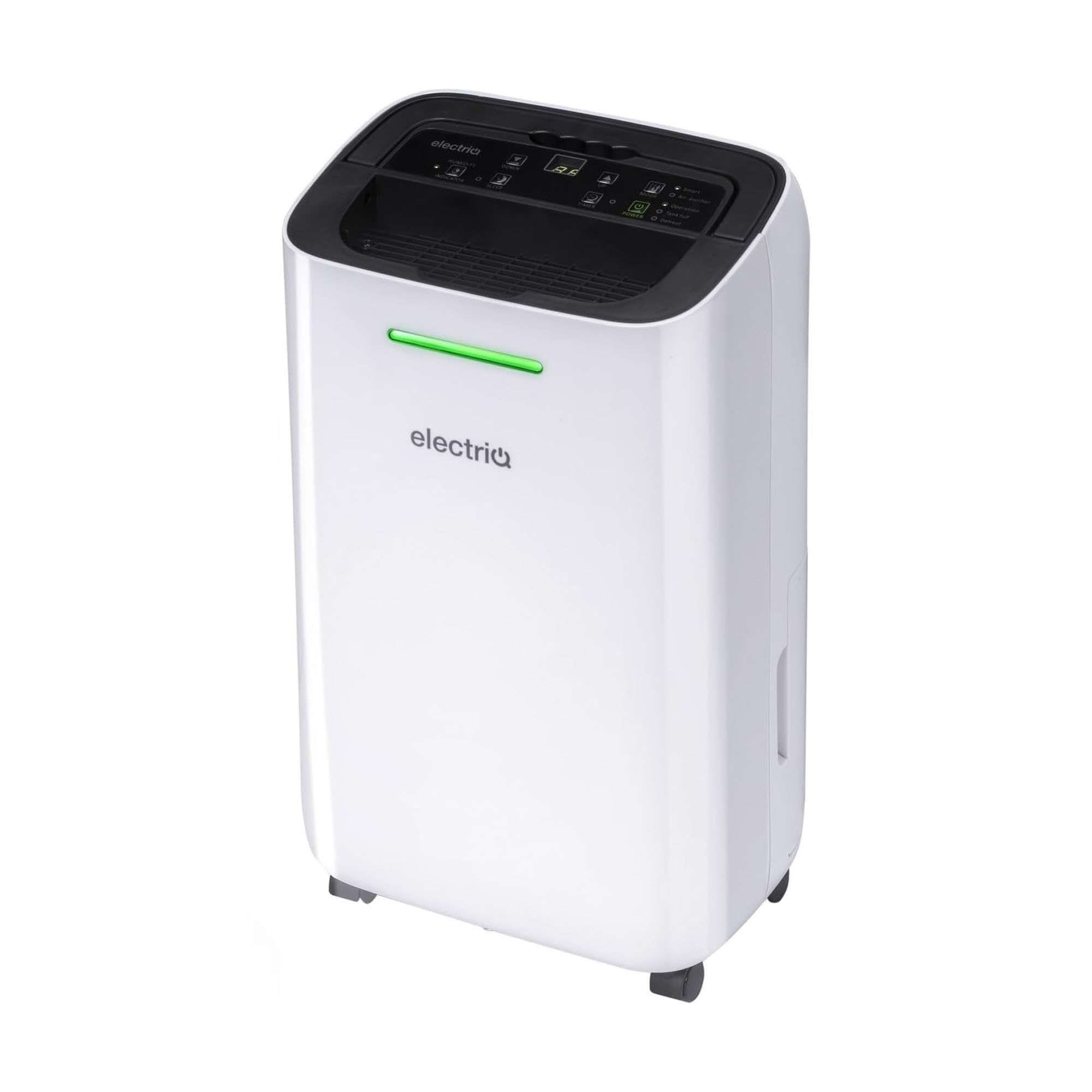
Medium rooms
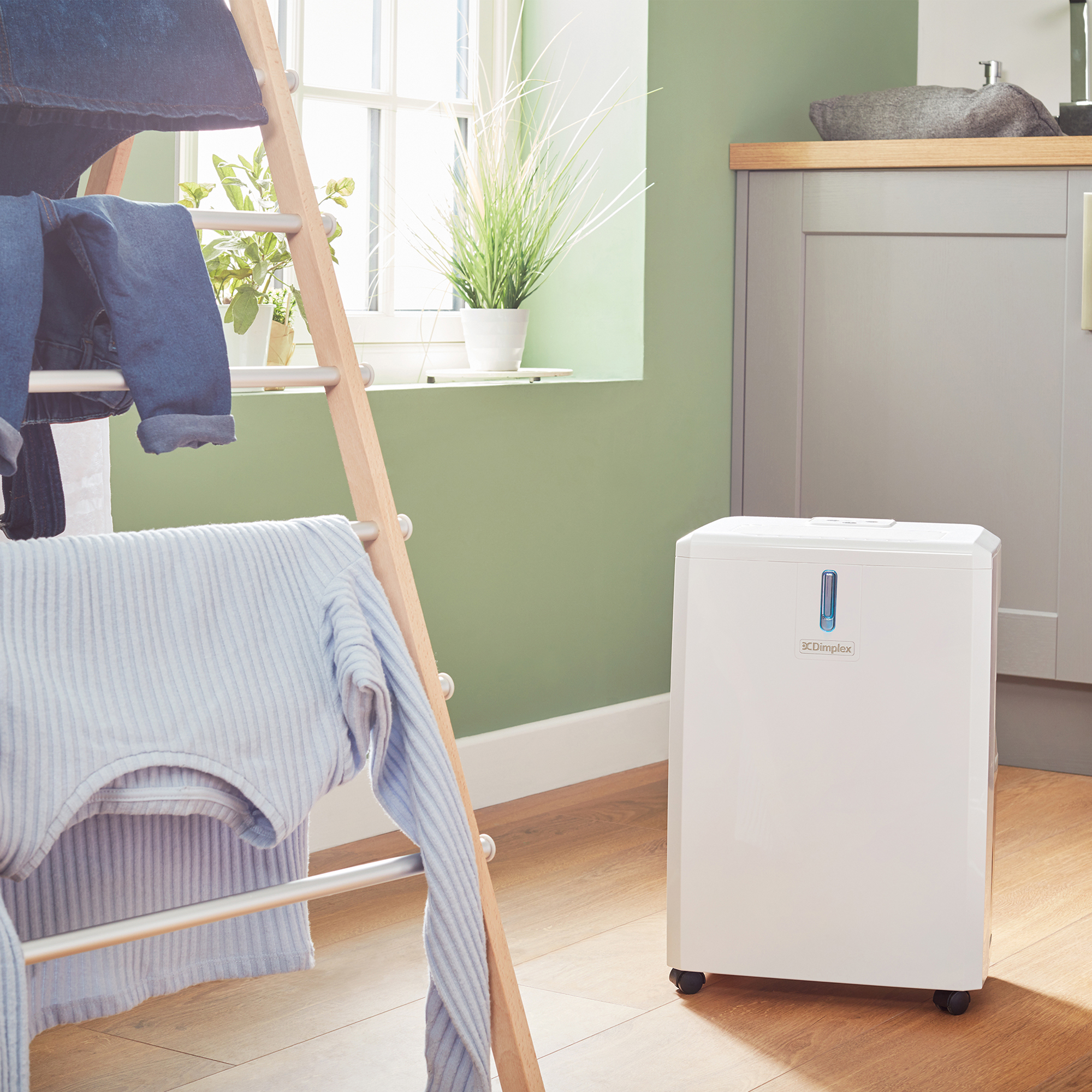
If you have a room between 400 and 800-square-foot, such as a living room or bedroom, you’ll need a slightly larger dehumidifier to get the job done.
Tech expert Andhi Ermawan from My Pros and Cons says, 'Remember, these are rough guidelines, and other factors like relative humidity, the number of occupants, and specific damp issues may require adjustments.' However, a dehumidifier that extracts around 20 to 25 litres per day should do the trick.
This will ensure that these larger rooms will remain free from damp and condensation, and allow your family to live comfortably in this shared space.
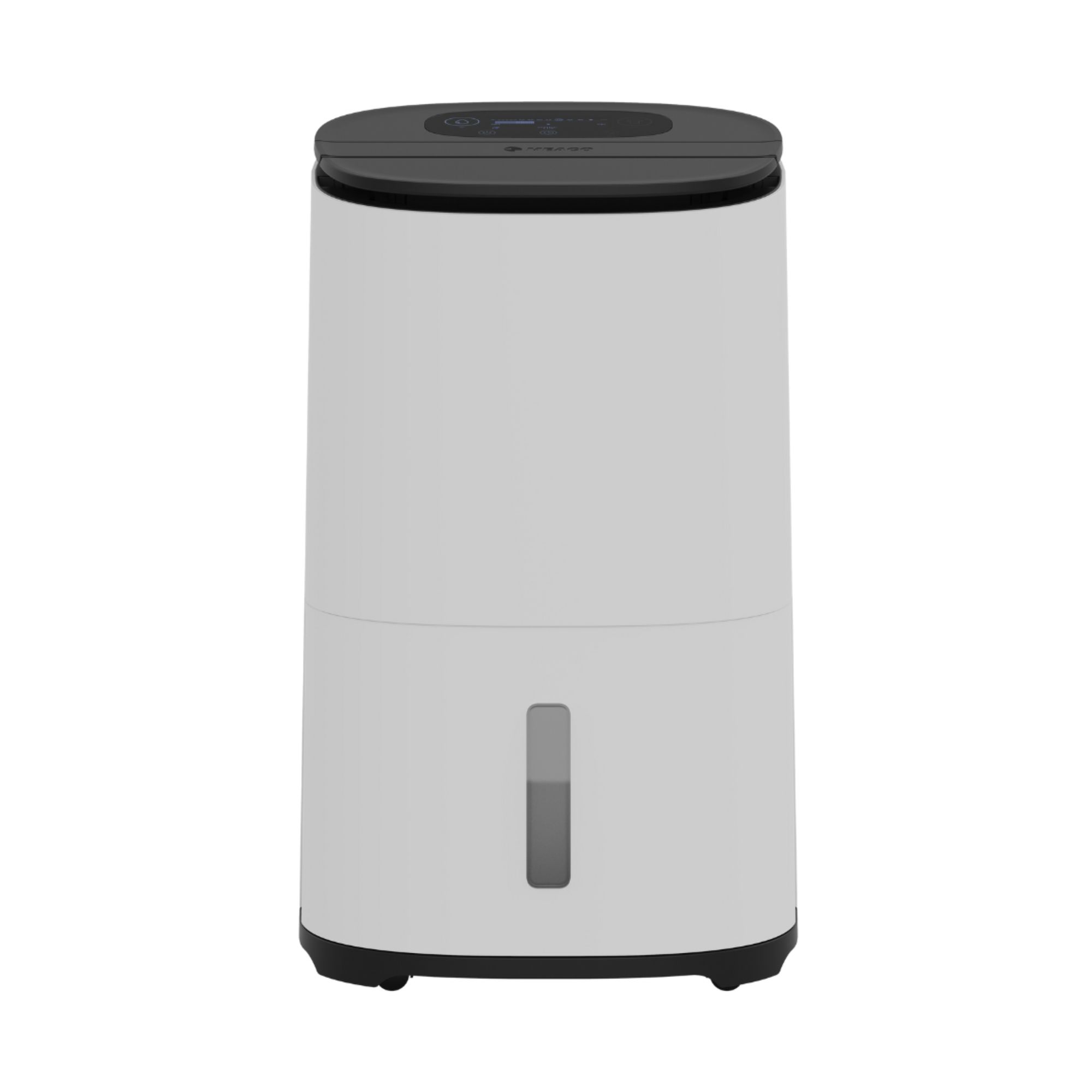
The whole house
In rare cases, moisture and condensation problems aren’t limited to one or two rooms in the house. It’s important to get rid of damp as soon as you can, but this can be difficult when you have a whole house to contend with. And while you could buy separate dehumidifiers for each room, you could also invest in a whole-house dehumidifier. These normally have a daily extraction rate of around 30-40 litres - but they can be noisy.
Katie Holland, Marketing Manager for Russell Hobbs, says, 'It’s also important to consider the noise level of a dehumidifier, especially if you’re planning to use it in your living space. Whilst all dehumidifiers generate a certain level of noise, lots of models contain a low noise motor to ensure minimal disturbance whilst in use.'
Of course, this extra noise is a small price to pay to keep your whole house protected from excess moisture.
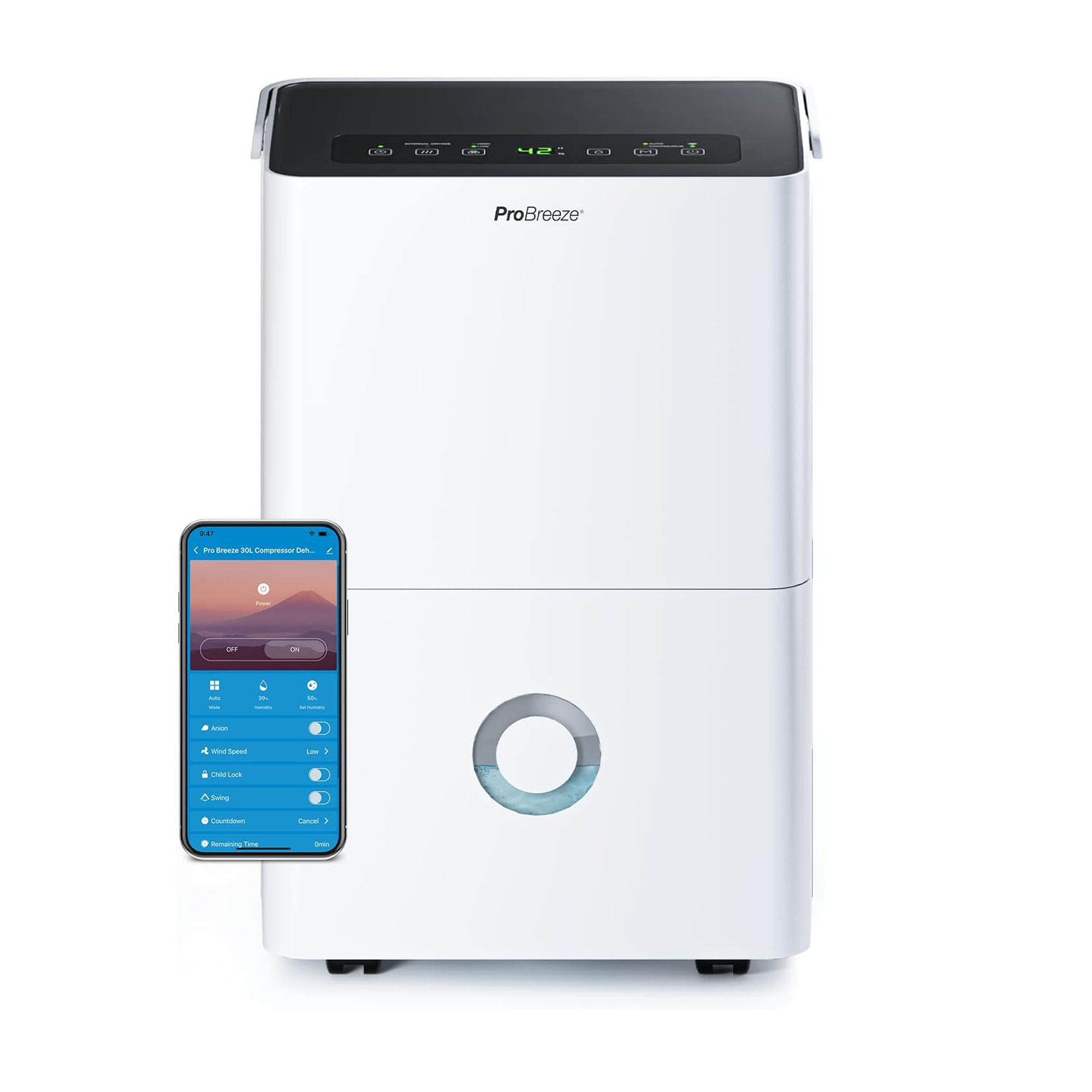
Tips for choosing the right size dehumidifier for your home
While the above information is a good jumping-off point, determining what size dehumidifier you need doesn’t always have a one-size-fits-all answer. Below, you’ll find a few tips on how to choose the right size dehumidifier for your house.
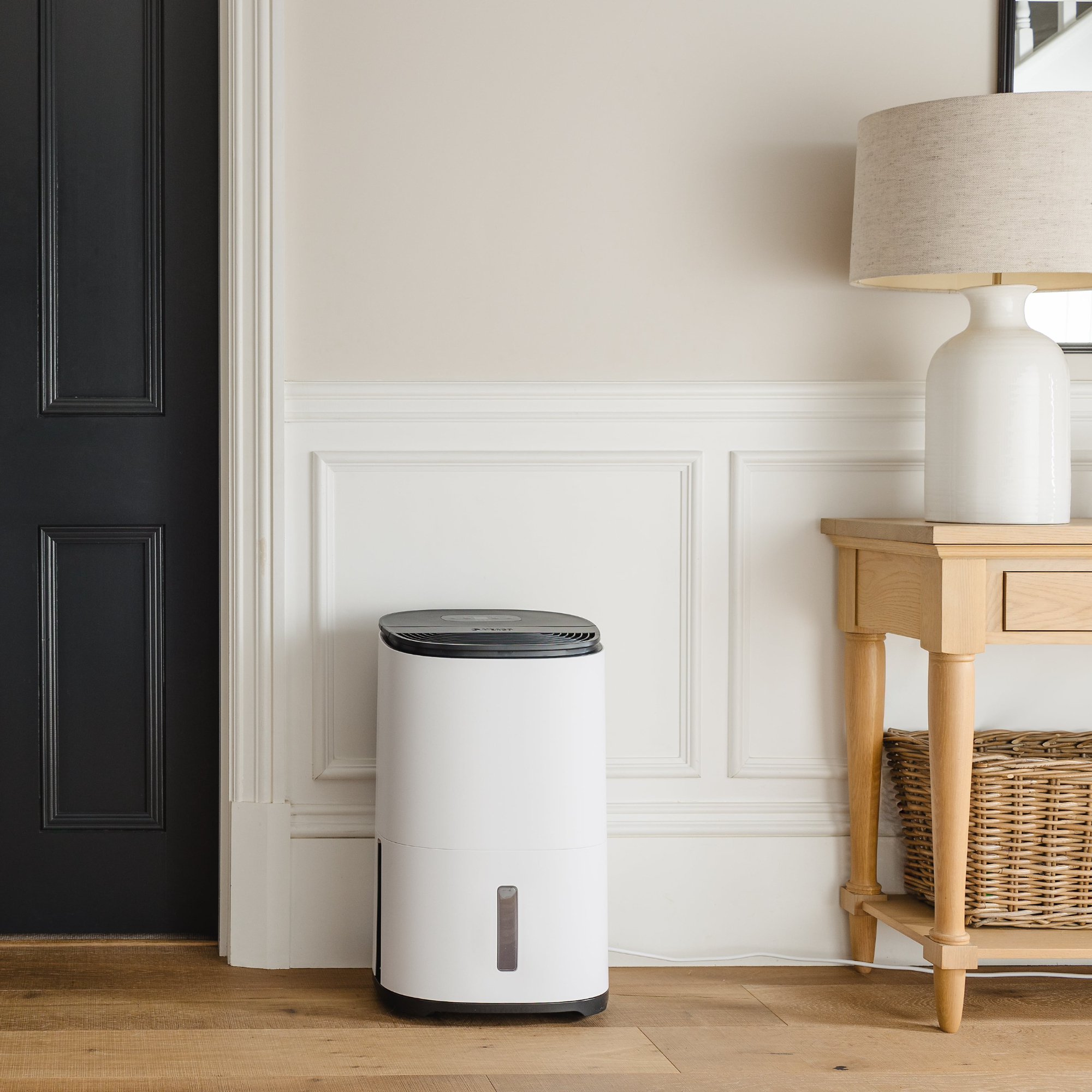
Measure the humidity: Although dehumidifiers are a popular appliance, there’s no point in buying an appliance you don’t need. To determine this, you can measure the humidity of your home using something like this ThermoPro TP49 Small Digital Hygrometer from Amazon. You can then compare it to the ideal humidity for a room and then choose the right size accordingly. Of course, if you’re really struggling with dampness, choosing the right size is essential.
Decide its purpose: When choosing the right size dehumidifier, you need to consider the purpose of this appliance. Are you buying a dehumidifier to maintain a constant humidity level? Are you using a dehumidifier to dry clothes? Are you using a dehumidifier to help you sleep better? Our guides on how to choose a dehumidifier to dry clothes and how to choose a dehumidifier for the bedroom can help you out.
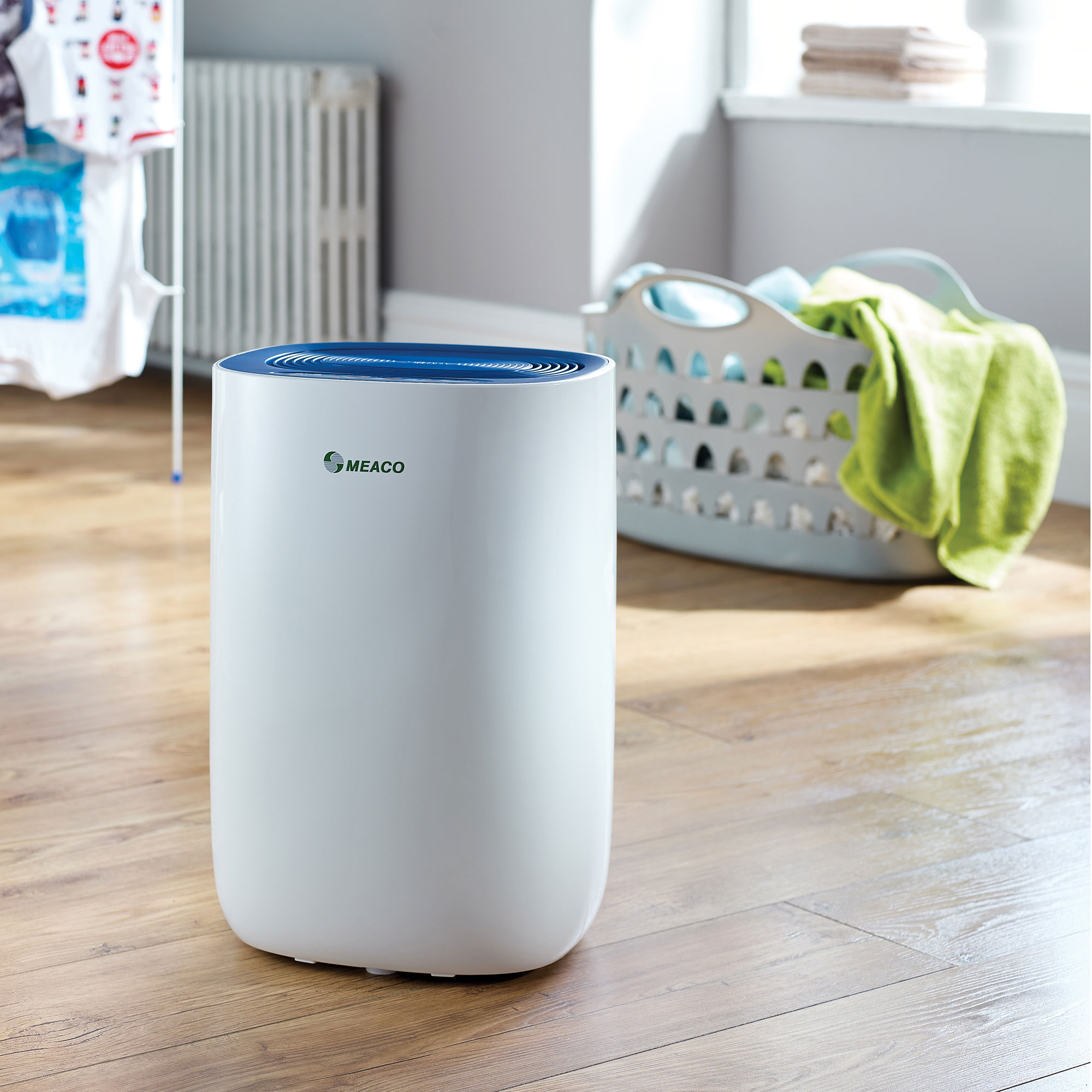
Understand your home: Whether you have a small home or a big home, there are bound to be some areas of the house that struggle more with condensation and excess moisture. This is usually the bathroom, kitchen, and bedroom. So, it may be better to go bigger. This is echoed by Joshua, who says, ‘If there are activities in your home that create more humidity like frequent cooking or drying your laundry – then a higher capacity dehumidifier may be beneficial for you, even for smaller rooms.’ Alternatively, you may only need a smaller dehumidifier to tackle these problem areas. If that’s the case, it might be better to opt for one with wheels to move around the house.
Consider the cost: Dehumidifiers come in all kinds of shapes, sizes, and prices. But generally, the larger they are (and the higher the extraction rate), the pricier they are. This is where you have two options to choose from: you could either opt for one large dehumidifier to tackle the whole house, or you could opt for a number of smaller dehumidifiers to tackle individual rooms. The price of these two options will vary depending on the size of your house, and different sizes may have different wattages, which will also affect how much it costs to run a dehumidifier. So, it’s best to do some sums before parting with your money.
FAQs
Is it better to undersize or oversize a dehumidifier?
You know what they say: bigger is better. This is the case with dehumidifiers, and it’s always better to oversize than undersize - especially if you buy this appliance to tackle damp problems in your home.
If you undersize and buy a dehumidifier that isn’t equipped to deal with the humidity levels in your home, you may find that your damp problems get worse. By picking something bigger than your needs, you’ll be able to rest easy knowing that it’s equipped to tackle everything your house throws at it.
What happens if you get too big of a dehumidifier?
Although buying a dehumidifier that’s too big for your home may not have any negative effects, there is always the chance that it will remove too much of the moisture in the air and make your home too dry. In extreme cases, this can lead to dry skin and potentially cause respiratory problems.
You’ll also waste a lot of energy by running a larger dehumidifier than you need, so it’s best to understand what size dehumidifier you need before buying this appliance.
Is it better to run a dehumidifier at night or day?
There is no right or wrong time to run a dehumidifier, as it can be beneficial at all times of the day. For example, it can help to lower humidity levels in your home after your family’s morning showers or it could help to prevent condensation on your bedroom windows at night.
Ultimately, you need to find what works best for your home and stick to a timeframe that allows your dehumidifier to work effectively and efficiently. But if you do plan on running your dehumidifier at night, it’s probably best to opt for one with a ‘sleep’ function - or just one that’s on the quieter side.
Get the Ideal Home Newsletter
Sign up to our newsletter for style and decor inspiration, house makeovers, project advice and more.

Lauren Bradbury has been the Content Editor for the House Manual section since January 2025 but worked with the team as a freelancer for a year and a half before that. She graduated with a Bachelor’s degree in English and Creative Writing from the University of Chichester in 2016. Then, she dipped her toe into the world of content writing, primarily focusing on home content. After years of agency work, she decided to take the plunge and become a full-time freelancer for online publications, including Real Homes and Ideal Home, before taking on this permanent role. Now, she spends her days searching for the best decluttering and cleaning hacks and creating handy how-to guides for homeowners and renters alike, as well as testing vacuums as part of her role as the Ideal Home Certified Expert in Training on Vacuums, having spent over 110 hours testing different vacuum models to date!
-
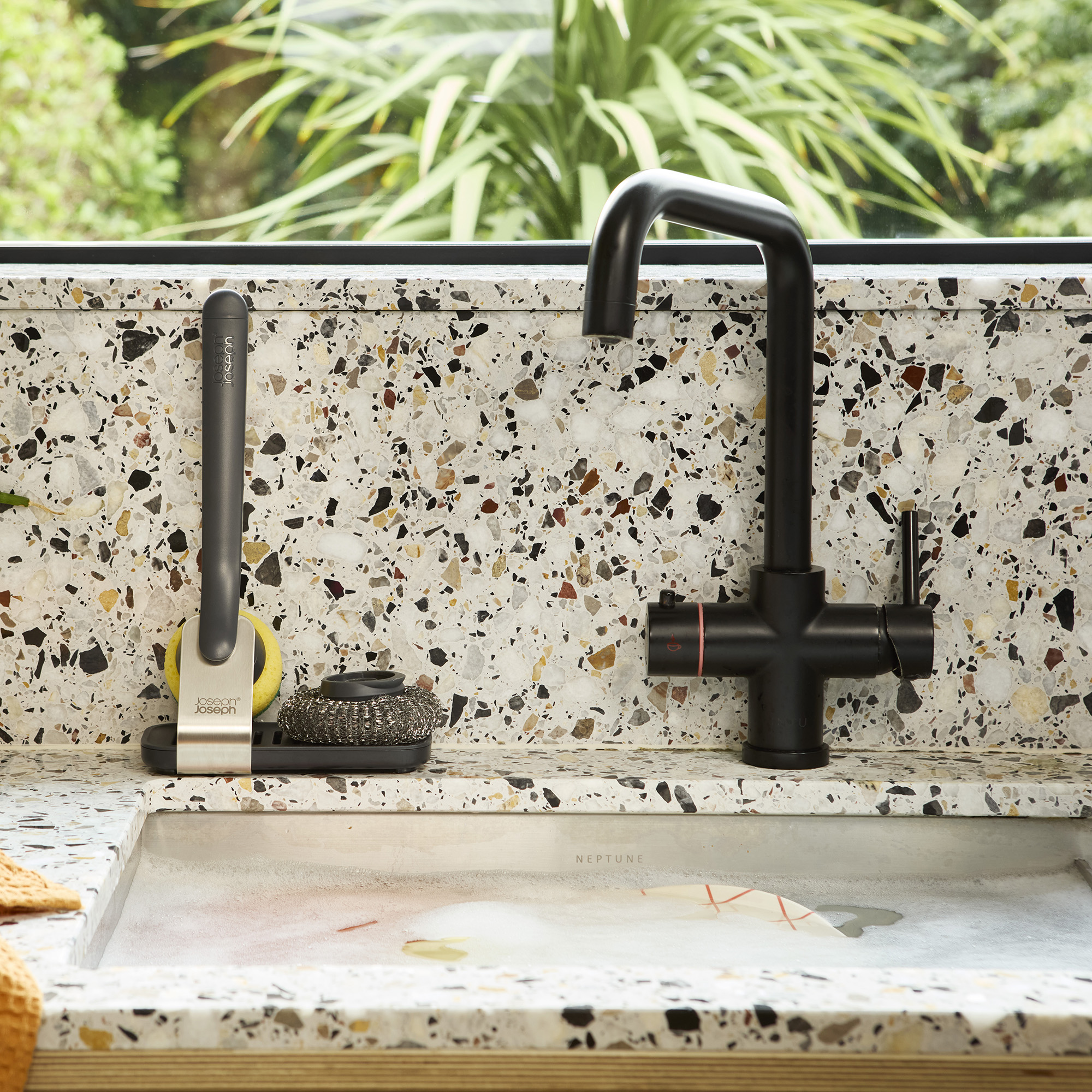 Don't tell my flatmates, but Joseph Joseph's clever new sink range finally made me enjoy washing up
Don't tell my flatmates, but Joseph Joseph's clever new sink range finally made me enjoy washing upI didn't know stylish washing up accessories existed until I saw this collection
By Holly Cockburn
-
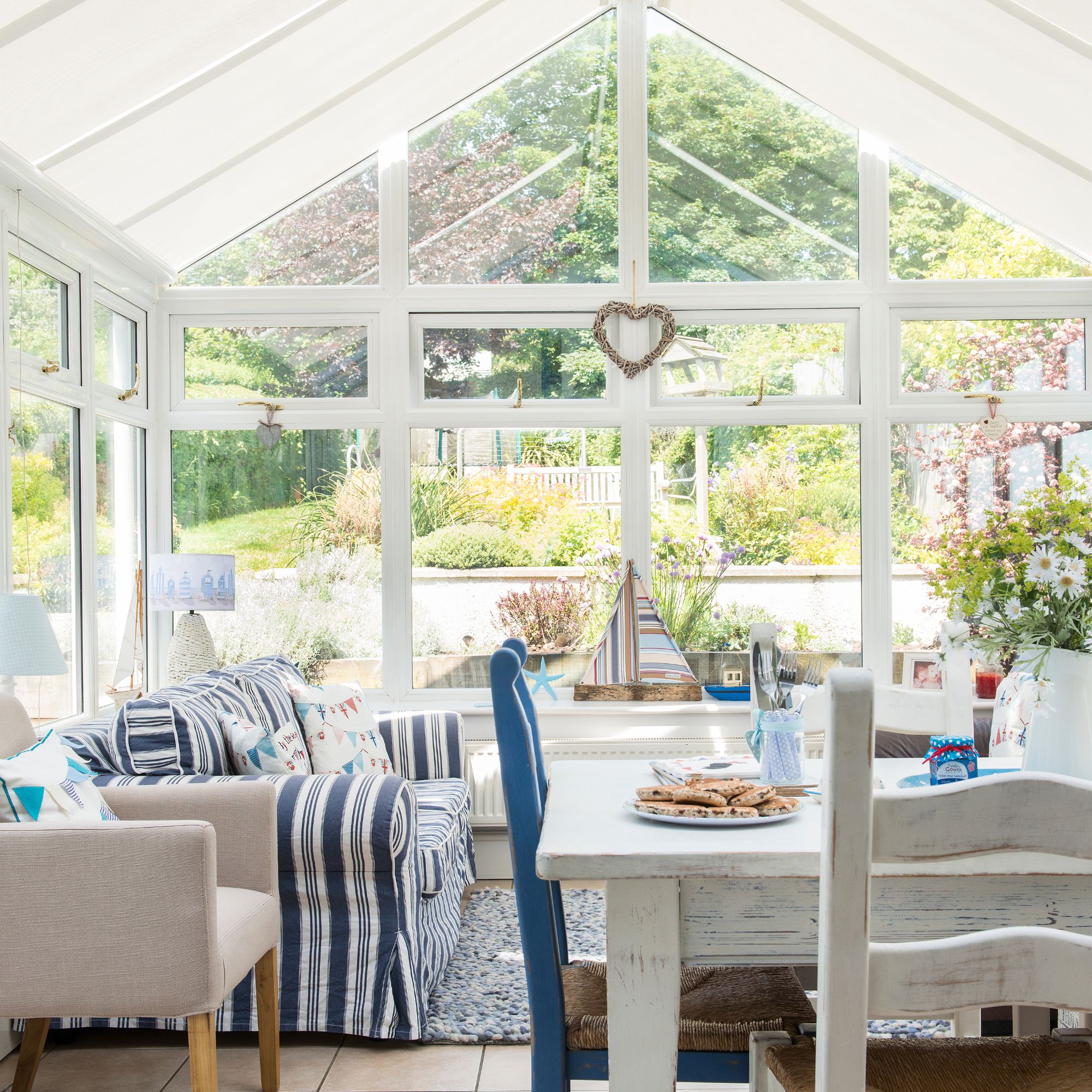 Is it cheaper to build an extension or a conservatory?
Is it cheaper to build an extension or a conservatory?One is usually cheaper, but it turns out that's not always the case
By Amy Reeves
-
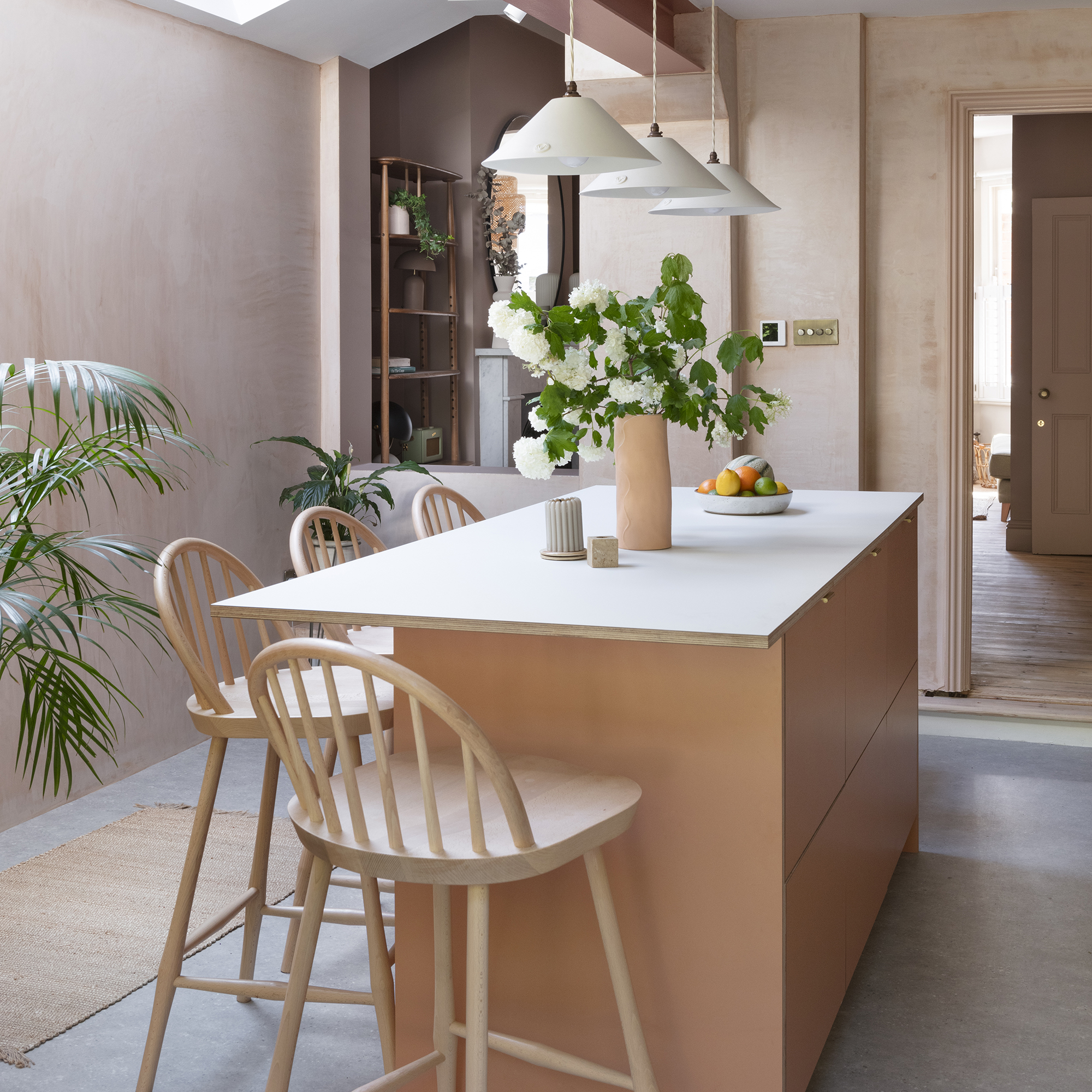 Can you add an island to an existing kitchen? Yes, but these are the 3 considerations to be aware of
Can you add an island to an existing kitchen? Yes, but these are the 3 considerations to be aware ofAdding an island is easier than you might think
By Holly Cockburn
-
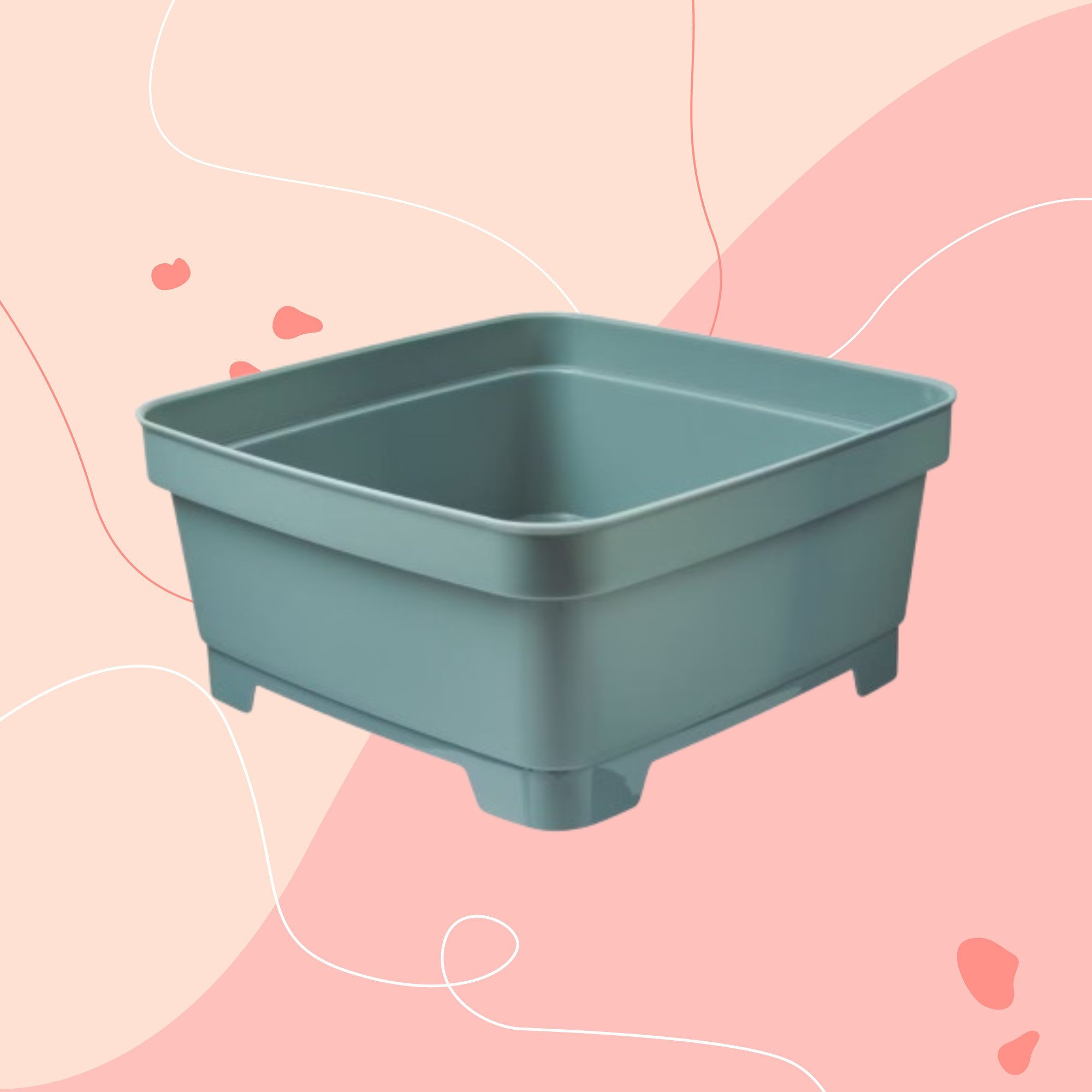 Aldi is releasing a budget alternative to the cult Joseph Joseph washing up bowl – it’s just £4.99
Aldi is releasing a budget alternative to the cult Joseph Joseph washing up bowl – it’s just £4.99The Joseph Joseph washing up bowl is an Ideal Home favourite - now we can't wait to try Aldi's alternative
By Kezia Reynolds
-
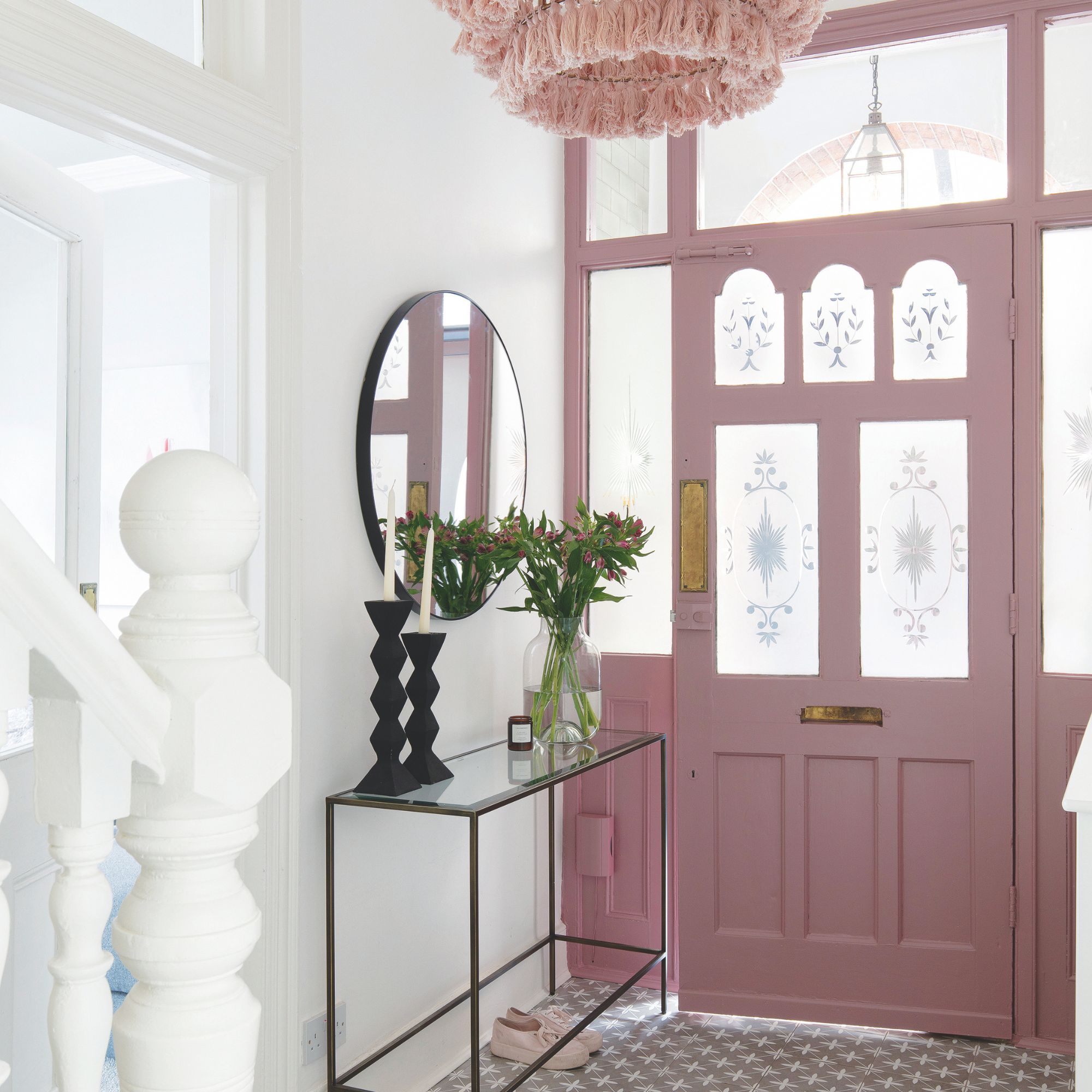 I just bought my first home, and this £10 buy was the very first thing I bought for it to make it feel warmer and secure
I just bought my first home, and this £10 buy was the very first thing I bought for it to make it feel warmer and secureIf I did it all again, this would still be my very first buy
By Rebecca Knight
-
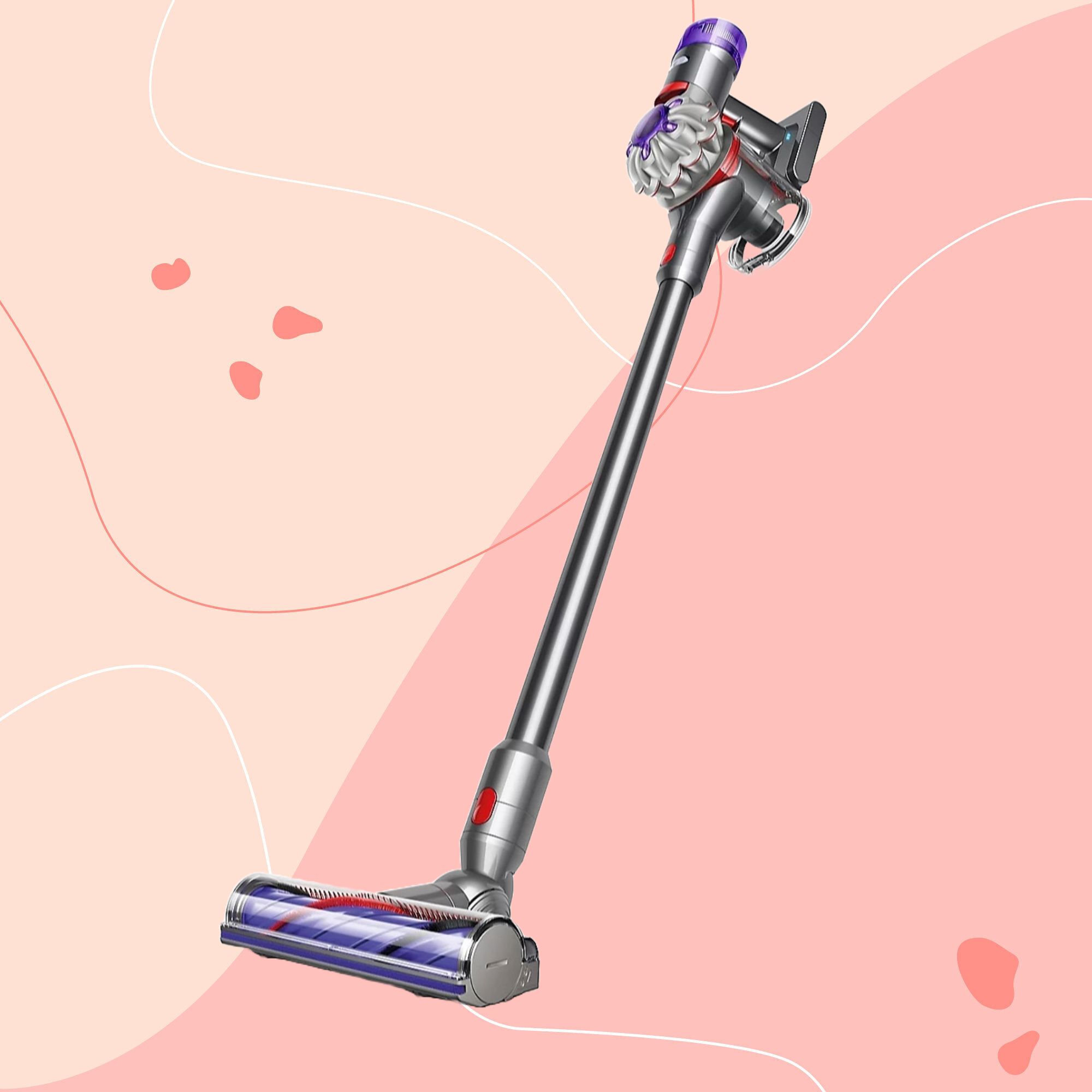 It’s normally impossible to find a Dyson vacuum for under £250 — but QVC has slashed the price of their bestselling models for a limited time
It’s normally impossible to find a Dyson vacuum for under £250 — but QVC has slashed the price of their bestselling models for a limited timeRun don’t walk to pick up the brand’s bestselling model for under £230 before it sells out
By Lauren Bradbury
-
 Catherine Zeta-Jones has revealed the cleaning product she swears by to keep her home fresh - and it’s just £8 on Amazon
Catherine Zeta-Jones has revealed the cleaning product she swears by to keep her home fresh - and it’s just £8 on Amazon'I use it on my counters. I use it on my walls. I use it on my doors. When I smell it, I know my house is clean.'
By Kezia Reynolds
-
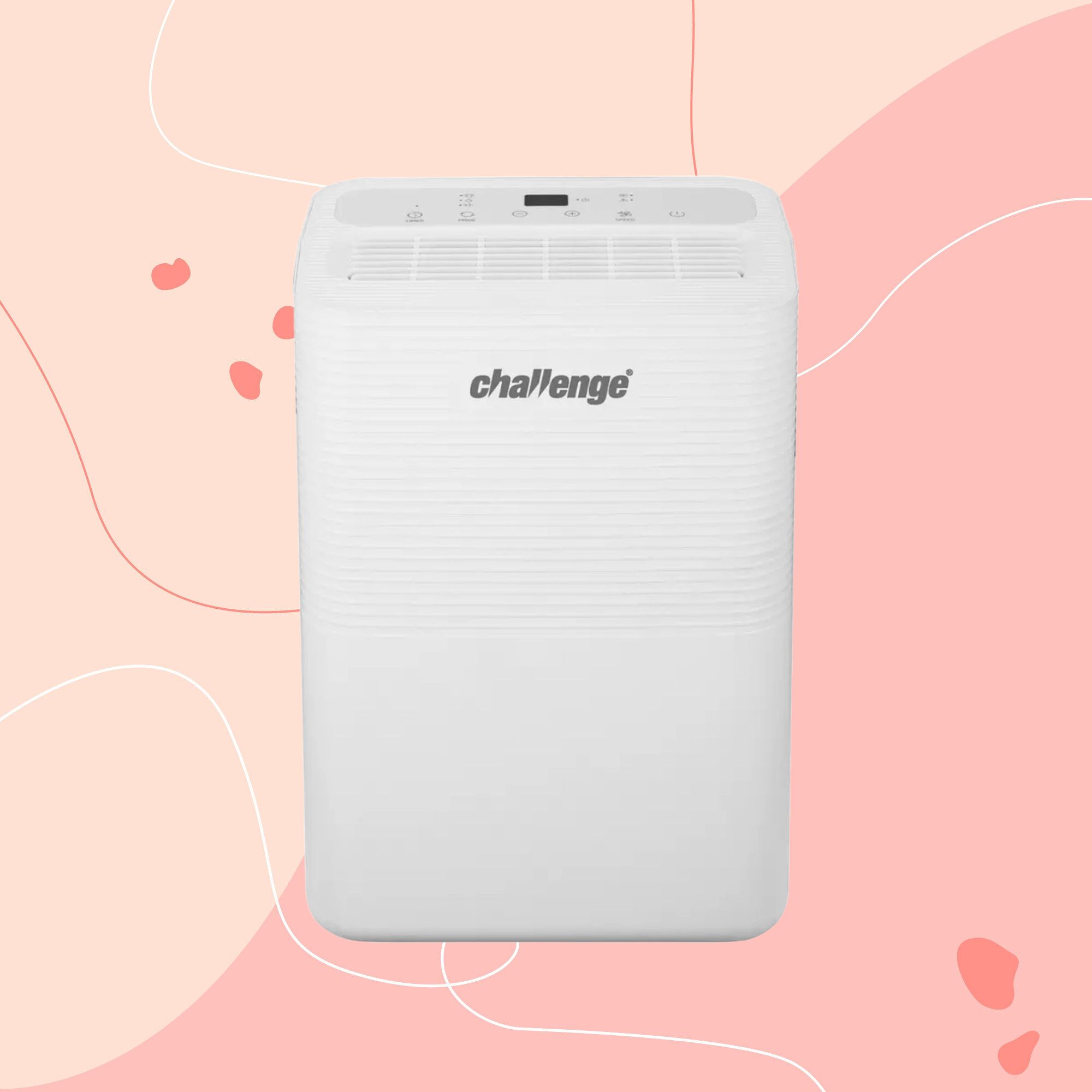 I tested the 12L Challenge dehumidifier in my damp Victorian home over winter — I haven’t spotted any signs of mould for the first time in five years
I tested the 12L Challenge dehumidifier in my damp Victorian home over winter — I haven’t spotted any signs of mould for the first time in five yearsThe Challenge 12L dehumidifier doesn’t have too many bells and whistles, but I can already see the difference it’s made to my damp home
By Lauren Bradbury
-
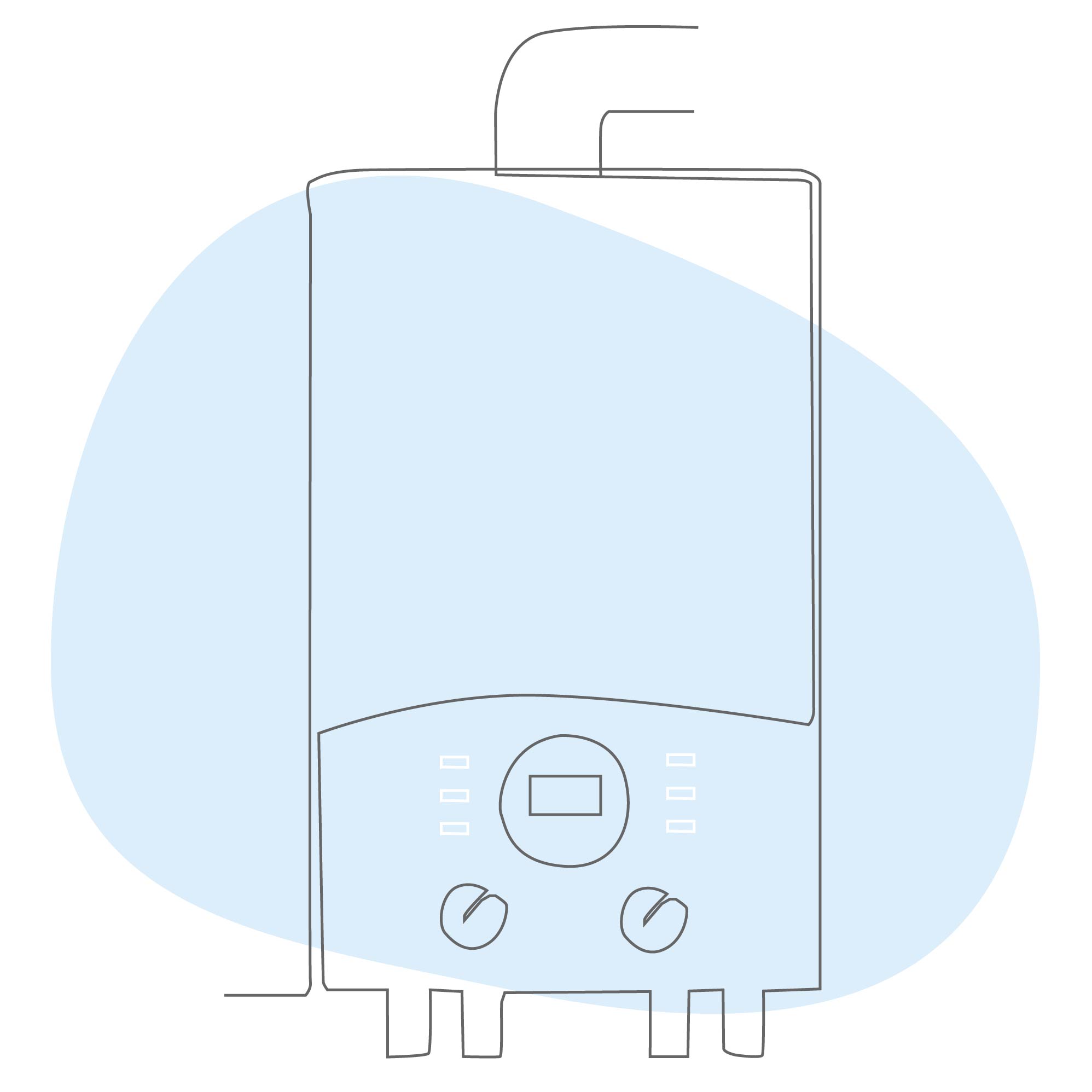 What is boiler flow temperature? Heating experts urge you to check yours now as you could be overpaying on your energy bills
What is boiler flow temperature? Heating experts urge you to check yours now as you could be overpaying on your energy billsTurning this little-known number down just a few degrees can result in some serious savings
By Lauren Bradbury
-
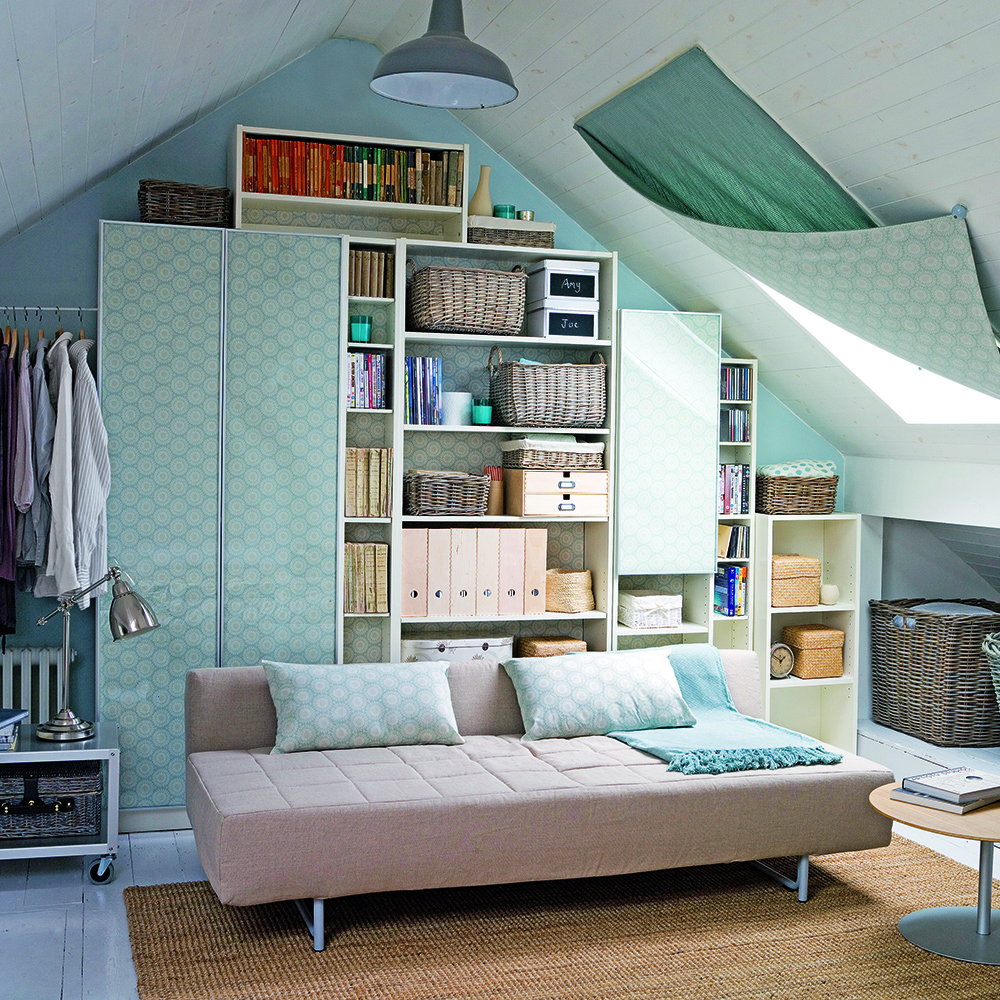 Stacey Solomon has shared 5 nifty wardrobe storage hacks to make getting ready in the morning easier — and they're genius
Stacey Solomon has shared 5 nifty wardrobe storage hacks to make getting ready in the morning easier — and they're geniusThese five wardrobe storage hacks are a gamechanger
By Katie Sims
-
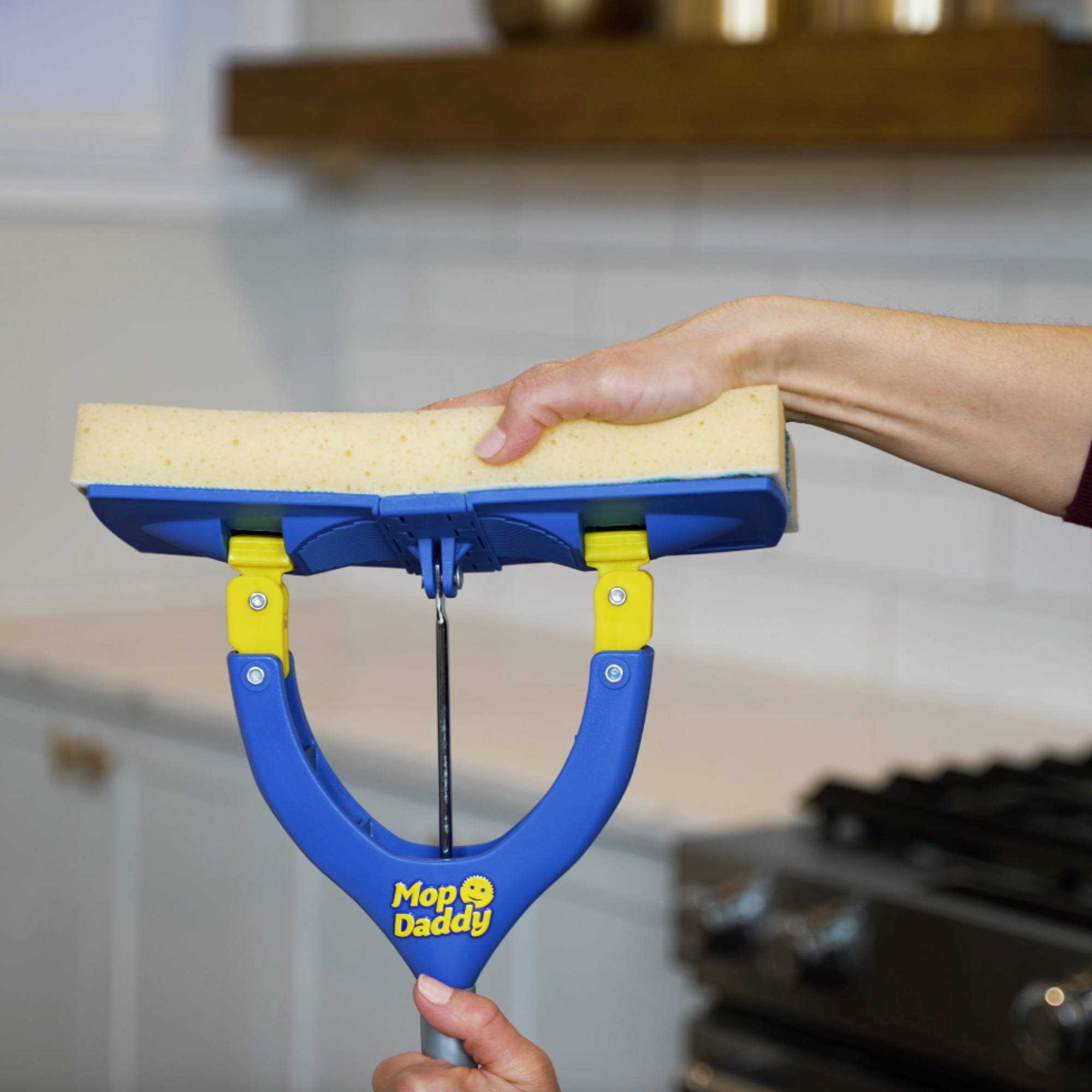 Cult cleaning brand Scrub Daddy has just launched a brand new butterfly mop — could it be the ultimate solution for banishing stubborn marks on your floor?
Cult cleaning brand Scrub Daddy has just launched a brand new butterfly mop — could it be the ultimate solution for banishing stubborn marks on your floor?We're obsessed with all things Scrub Daddy
By Kezia Reynolds